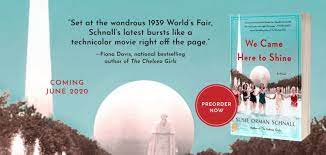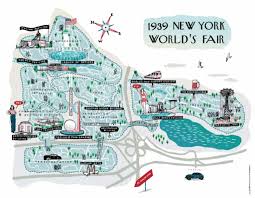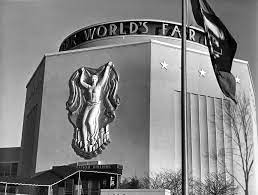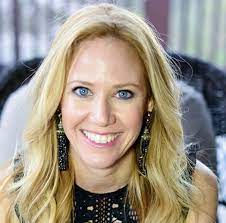Goodreads meta-data is 384 pages, rated 3.75 by 1569 raters.
Genre: Chick Lit.
Verdict: Gal pals unite!

Vivi(an) and Max(ine) are two damsels determined not to be distressed. They start three thousands miles apart and end up, unwillingly in each case, at the 1939 World’s Fair during a chilly May at Flushing in New York City. Vivi is a starlet on her way up in Hollywood’s food chain in sunny LA. Since moving there from Brooklyn Heights she has undergone voice training to lose the accent, wears lens for eye color, hair dyeing, posture correction, lost weight, layered with make-up, trained to walk, had cosmetic surgery, and been rugged out in new clothes. Later even her estranged sister barely recognises her. By contrast Max, who is a couple of years younger, say around twenty, was an NYU student in soggy Gotham vying for a scholarship in journalism. Her one aim in life is a job at the New York Times, in which ambition she is enthusiastically supported by her family for the Times is oracular. Then the World’s Fair beckoned, sort of.
Both are intelligent, independent-minded, and hard working. And everything is falling into place, until life throws each a curveball. The studio serves up a Steve Carlton slider to Vivi when the producer of her current film – her first leading role – decides to lend her to a friend and fellow producer who is masterminding an aquacade at the World’s Fair, despite her protests. Off she goes, resigned to making the best of it, after all her watery co-star is the biggest orb in the Hollywood firmament at the time, Johnny Weissmuller. Having her name coupled with his on a program has got to be good news. Hmm, was that a double entendre?

Max enters an internship program, aspiring for a placement with the aforementioned Times. Then a Bob Gibson sinker sees her instead relegated to duties with a daily newsletter published at the Fair. Worse, the duties are clerical, not journalistic. In each case the reader is left in no doubt, no doubt whatsoever, that these curveballs came because of the stifling atmospheric sexism of the time and place. Women do the clerical work. Starlets are chattel property to be used.
When they both get to the Fair there is a lot about it that I found fascinating and it has whet my appetite for more on the Fair, and, gulp, less on the women. (Notice, I did not say ‘girls.’)
There are chaps circling around, including Tarzan.
As the story goes on we add three other women to the team who devise a way to outwit the men who manipulate them. Nicely done. The prevailing sexism and exploitation of the weaker sex is the underlying narrative, and the World’s Fair itself aspires to be a major character but comes over more as a painted backdrop. I was not sure about all the resolutions, particularly for the journalist-intern. She seems to have gotten the short end of the stick in her own plan. However, the chains of crippling sexism did fall away (at least for a time).
If the title ‘We Came Here to Shine’ is explained in the book, I blinked and missed it. The book has a very informative afterword about the history and the Fair that I particularly liked that and hope to follow up on a couple of the suggestions.

I had a soupçon of the 1939 New York City World’s Fair in the memorable Dark Palace (2000) when Edith worked at the League of Nations Pavilion as the lights went out in September. Occasionally I have wanted to find out more about this event, greatly overshadowed by start of World War II in Europe. Recently I went looking again for something; I had rather been hoping for a historical account but among the few titles I found most were concerned with style featuring colour plates and so on, not suitable for lazy reading on the sofa or at bedtime. Nor did any of these artistic, architectural, or fashion studies seem to have any sociological, political, or historical perspective as gleaned from the blurbs. The Mechanical Turk, however, consulted the algorithm and proffered this title which I resisted at first, but then asked for a Kindle sample in the absence of any more suitable alternative, and then read on to the end. Glad I did.

Baseball fans will know both Carlton and Gibson, each of whom let his pitches do most of the talking, though Carlton on the few occasions when he spoke publicly was positively evangelical about the slider, while Gibson mostly grunted on and off the mound. Every batter knew Carlton would deliver a slider and no one could hit it. Every hitter knew Gibson’s out-pitch was the sinker and he liked to get batters out right now, but few batters ever saw it and not one ever hit it. Carlton once proclaimed he was put on earth to throw the slider, while Gibson’s mission was to get batters out, now! He did. They both did. There was a time when both were contracted to the same team, and that would have been a fearsome twosome to rival the tyranny of Koufax and Drysdale.
